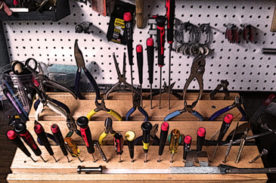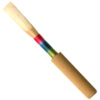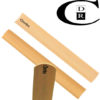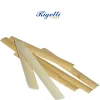When you or your child are in the market for a double reed instrument—such as an oboe or bassoon—it’s important to know what to look for and how to test each instrument before making a decision. This guide will help you navigate the process with confidence.
Key Considerations Before You Begin
– Budget: Set a budget that includes both the cost of the instrument and any necessary accessories (reeds, cases, etc.).
– Skill Level: Consider whether the instrument is for a beginner, intermediate, or advanced player.
– Personal Preference: Remember, this is a personal choice—what feels and sounds right to one person might not be the same for another.
Attributes to Look For
Sound Quality
– Clarity: Does the instrument produce a clear, resonant sound?
– Tone: Is the tone warm and consistent across all registers?
– Projection: Does the sound carry well in different settings?
Ease of Play
– Response: How easily does the instrument respond to breath and finger movements?
– Intonation: Does the instrument stay in tune across its range?
– Comfort: Is the key action smooth, and does the instrument feel comfortable to hold?
Build Quality
– Materials: Check the quality of the wood or synthetic materials used.
– Craftsmanship: Look for smooth, well-finished surfaces and precise key mechanisms.
– Durability: Consider the reputation of the brand for long-lasting instruments.
Aesthetics
– Appearance: Does the instrument look visually appealing to you?
– Finish: Is the finish smooth, even, and free from blemishes?
Value
– Is the brand well known?
– Does this brand retain its value over time?
How to Test the Instrument
Warm-Up:
– Spend a few minutes getting comfortable with the instrument. Play some long tones and scales to start.
Test the Range:
– Play notes across the entire range of the instrument, from the lowest to the highest notes.
– Listen for consistency in tone and intonation across the range.
Dynamics:
– Try playing at different volumes—soft, medium, and loud.
– Notice how the instrument responds and whether it maintains a good sound quality at all dynamic levels.
Articulation:
– Test different types of articulation (staccato, legato, etc.).
– Check for clarity and ease in executing each articulation.
Play a Piece:
– If possible, play a piece of music you’re familiar with.
– This helps you assess how the instrument handles more complex passages and transitions.
Sample Graph: Comparing Instrument Attributes
Note: The ratings are just an example. Use this as a model or template to rate your own findings.
| Attribute | Instrument A | Instrument B | Instrument C |
| Sound Quality | ⭐⭐⭐⭐⭐ | ⭐⭐ | ⭐⭐ |
| Ease of Play | ⭐⭐⭐ | ⭐⭐⭐⭐⭐ | ⭐⭐⭐⭐ |
| Build Quality | ⭐⭐⭐ | ⭐⭐⭐⭐ | ⭐⭐⭐ |
| Aesthetics | ⭐⭐⭐⭐ | ⭐⭐⭐⭐⭐ | ⭐ |
| Overall Rating | ⭐⭐⭐⭐ | ⭐⭐⭐⭐ | ⭐⭐ |
Final Thoughts: Trust Your Instincts
Choosing a double reed instrument is a personal decision. While these guidelines are here to help, the most important factor is how the instrument feels and sounds to you. Take your time, try out several instruments, and choose the one that feels like the best fit.
Remember, the right instrument can inspire years of musical growth and enjoyment, so make sure it’s one you or your teen will love playing!
Good luck with your selection! If you have any questions or need further guidance, feel free to reach out to us or your instructor.








